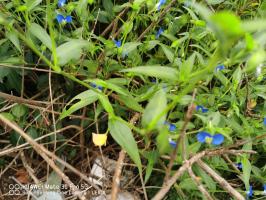Does the Mango Tree Belong to the Flowering Plants?
Many people know that mango is a delicious fruit that is a native of tropical regions. However, not everyone knows that the mango tree belongs to the flowering plants. In this article, we will explore the characteristics of the mango tree and why it is classified as a flowering plant.
The Anatomy of the Mango Tree
The mango tree is a tall, evergreen tree that can grow up to 100 feet tall. Its trunk can be as wide as three feet in diameter, making it a sturdy and resilient tree. The mango tree has a unique branching system, with its branches growing at a 45-degree angle from the trunk. The leaves of the mango tree are oblong-shaped and can grow up to 12 inches in length.
The Flowering Process of the Mango Tree
The mango tree flowers annually, typically between December and March. The flowering process of the mango tree is quite unique, as the tree will produce hundreds and even thousands of small, fragrant flowers that are grouped in clusters. Each flower contains both male and female reproductive organs, allowing the tree to self-pollinate. Once the flowers have been pollinated, they will begin to develop into mango fruits.
The Classification of the Mango Tree
Despite being commonly referred to as a fruit tree, the mango tree belongs to the flowering plant family. Specifically, the mango tree is classified as a member of the Anacardiaceae family, which also includes other fruit-bearing trees such as the cashew and pistachio trees. The Anacardiaceae family is further classified into the order Sapindales, which also includes other tropical fruit trees like lychee and longan.
The Importance of Mango Trees as Flowering Plants
Mango trees play an important role in the ecosystem as flowering plants. The tree's flowers provide a source of nectar and pollen for bees and other pollinators. Additionally, the mango tree is an important source of food and income for people in tropical regions. It is estimated that the mango industry generates billions of dollars annually, providing economic opportunities for thousands of people around the world.
In Conclusion
In summary, while the mango tree is commonly known for producing delicious fruits, it is also a flowering plant. Its unique branching system, oblong-shaped leaves, and annual blooming period are just some of the characteristics that classify it as a member of the Anacardiaceae family. As an important source of food and income, the mango tree is a vital component of the tropical ecosystem.

 how many times do yo...
how many times do yo... how many planted tre...
how many planted tre... how many pine trees ...
how many pine trees ... how many pecan trees...
how many pecan trees... how many plants comp...
how many plants comp... how many plants can ...
how many plants can ... how many plants and ...
how many plants and ... how many pepper plan...
how many pepper plan...































